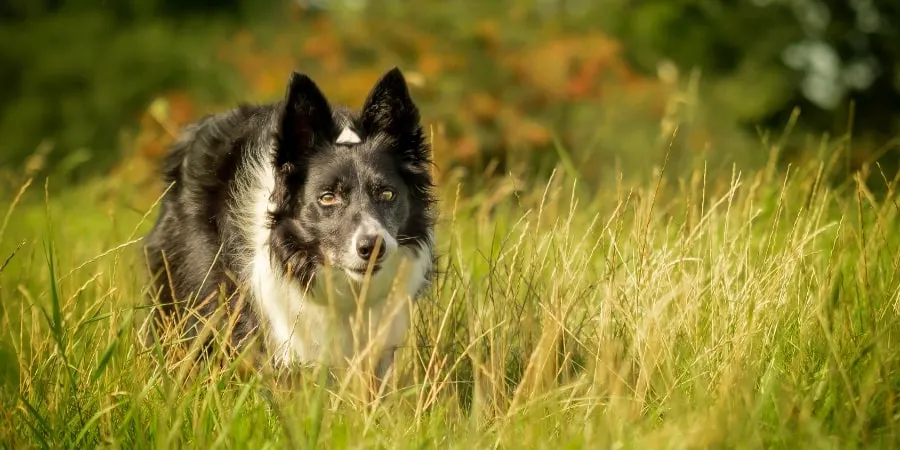Prey drive is a powerful, innate instinct in dogs that compels them to chase and capture moving objects, mimicking their ancestral hunting behaviors. While it’s harmless in play like fetching balls or tugging toys, a high prey drive can lead to dangerous situations during walks, such as bolting after squirrels, birds, or livestock. If your dog fixates on small animals or farm creatures, learning to manage prey drive is essential for their safety and yours. This guide draws from veterinary expertise at organizations like the People’s Dispensary for Sick Animals (PDSA) to help you channel this instinct responsibly.
What Is Prey Drive in Dogs?
Prey drive refers to the sequence of behaviors dogs use to pursue, catch, and sometimes kill prey, rooted in their predatory heritage. You’ll notice it in everyday play: eyes locking on a toy, stalking, chasing, pouncing, and shaking. These actions provide mental stimulation and exercise, but unchecked, they can result in escapes, injuries, or conflicts with wildlife.
Not all dogs exhibit the same intensity. Factors like genetics, early socialization, and environment influence it. Dogs with strong prey drive often show heightened excitement around fast-moving stimuli, such as joggers or cycling cats. Recognizing early signs—like stiff posture, intense staring, or sudden lunges—allows proactive training to prevent accidents.
Dog Breeds Prone to High Prey Drive
Certain breeds, bred for hunting or herding, display stronger prey drive due to selective breeding. Herding dogs like Border Collies may “herd” children or cars, while sight hounds excel at pursuit.
 Breeds with high prey drive including Greyhounds, Lurchers, Collies, and Terriers
Breeds with high prey drive including Greyhounds, Lurchers, Collies, and Terriers
Common high-prey-drive breeds include Greyhounds, Lurchers, Collies, Terriers, and Salukis. Terriers were developed to hunt vermin underground, making them relentless pursuers of small mammals. However, any breed—or mixed dog—can develop this trait. Puppies from working lines may inherit it more prominently. Always assess your individual dog’s tendencies rather than relying solely on breed stereotypes, as per advice from animal behaviorists.
Effective Training to Control Prey Drive
Training is the cornerstone of managing prey drive, focusing on impulse control and positive reinforcement. Start in low-distraction environments and gradually increase challenges. Consistency across family members reinforces commands, building reliability.
Teach the “Leave It” Command
Say “leave it” the instant your dog notices a potential chase target, like a rabbit. Redirect attention with a high-value treat or toy, rewarding focus on you. Practice daily: scatter treats on the floor, cover them, and reward ignoring them. This builds resistance to temptation.
Master Recall Training
A rock-solid recall saves lives. Use a long line in safe areas, calling your dog’s name followed by “come” in an excited tone. Reward lavishly with praise, play, or food upon return. Gradually phase out the line, practicing in varied settings. For high-drive dogs, enroll in professional classes emphasizing reward-based methods.
Employ Distractions and Management Tools
Anticipate triggers during walks by scanning ahead. Distract with squeaky toys or commands before fixation occurs. Secure gardens with 6-foot fences and self-closing gates to protect local wildlife. Keep leads short in risky areas, and consider harnesses over collars to reduce pull injuries.
Muzzle training prevents bites during incidents; pair it with treats to create positive associations. Lifelong training sustains progress—never assume it’s “fixed.”
Preventing Chases Around Livestock and Wildlife
Livestock worries amplify prey drive risks, as worrying sheep can legally result in fines, seizure, or euthanasia in many regions. Rural walks demand vigilance.
 Dog on a lead being walked safely near sheep and livestock
Dog on a lead being walked safely near sheep and livestock
Avoid fields with animals by choosing urban paths, canals, or woods. Scout ahead and carry spares: short leads, treats, and toys. If unavoidable, leash up immediately, stay peripheral, and use rewards to maintain focus. Top tip: Practice “emergency U-turns” at home—call and pivot direction for treats.
If your dog breaks free, don’t panic or punish. Run excitedly away, whistling or squeaking toys to lure them. Once safe, praise profusely. Punishment erodes trust and recall.
Long-Term Strategies for Success
Combine training with enrichment: puzzle toys, scent games, and flirt poles simulate hunting safely. Regular exercise curbs excess energy fueling impulses. Consult vets or certified trainers for personalized plans, especially if anxiety underlies the drive.
In summary, prey drive is natural but manageable through proactive, positive training. Prioritize recall, “leave it,” and environmental control to keep walks enjoyable and safe. Always seek professional veterinary advice for persistent issues—your dog’s well-being depends on it. Explore more pet safety tips from trusted sources to enhance your bond.
References
- People’s Dispensary for Sick Animals (PDSA): Prey Drive Guidance
- American Kennel Club (AKC): Impulse Control Training Resources
- Certification Council for Professional Dog Trainers (CCPDT): Reward-Based Methods
